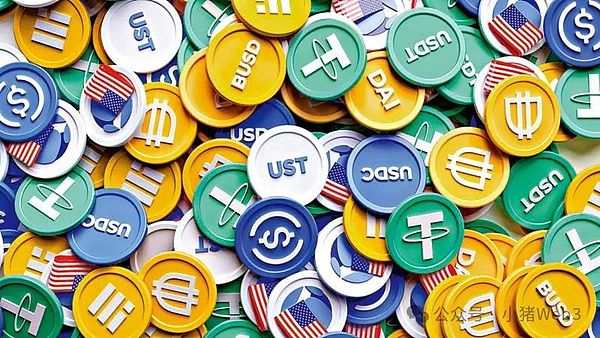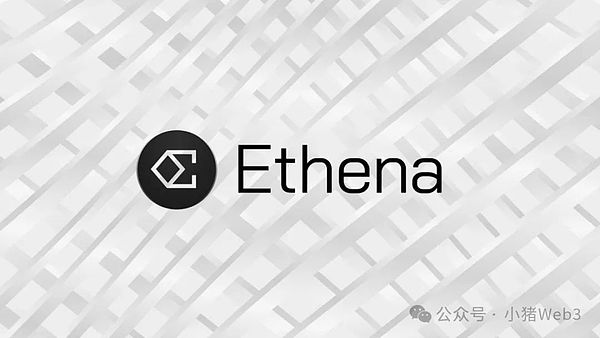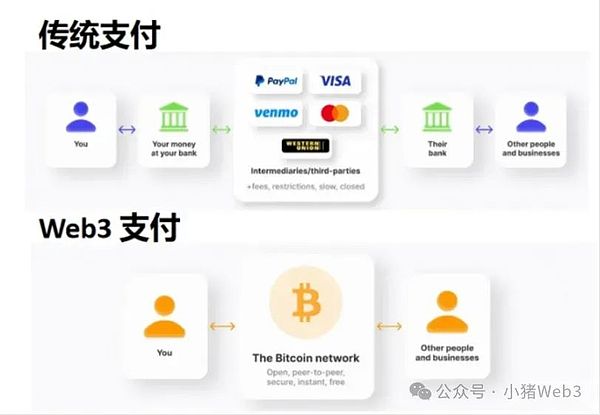Foreword
While the total market value of cryptocurrencies has evaporated by nearly $900 billion since Trump took office, and altcoins have entered a deep bear market, the total market value of stablecoins has been hitting all-time highs. According to DefiLlama data, the current total market value is $230.45 billion, an increase of $2.3 billion in the past seven days. Compared with the same period last year, the market value of stablecoins has increased by 56%. In the overall market value, Tether's $USDT stablecoin dominates, with a market value of nearly $144 billion, accounting for 62.6%, followed by Circle's $USDC, with a market value of $59 billion.
Stablecoins are cryptocurrencies designed to maintain a relatively stable value, and are designed to minimize the high volatility inherent in the crypto asset market. Unlike traditional cryptocurrencies such as Bitcoin, the value of stablecoins is usually pegged to a stable asset, such as the U.S. dollar, the euro, or gold. This feature makes it a key tool in the cryptocurrency ecosystem.

Against the backdrop of crypto assets and U.S. stocks fluctuating downward and both under pressure, the rise of stablecoins against the trend is considered to be a manifestation of consolidating the hegemony of the U.S. dollar. At the first White House Crypto Summit, Trump expressed his hope to receive a stablecoin legislative bill before the August congressional recess to advance the federal government's regulatory reforms on cryptocurrencies, and reiterated his hope that the U.S. dollar will "remain dominant for a long time."
In addition to the United States, other countries and regions, including Hong Kong, Japan, and Thailand, are working to adopt stablecoins. On July 18 last year, the Hong Kong Monetary Authority announced the "Sandbox" for stablecoin issuers; on March 10 this year, the Thai Securities and Exchange Commission has identified stablecoins USDT and USDC as compliant cryptocurrencies; on the same day, the Japanese Cabinet announced the approval of a proposal to reform laws related to crypto brokerage and stablecoins, allowing crypto companies to operate as "intermediary businesses."
According to the Financial Times, some of the world's largest banks and fintech companies are eager to launch their own stablecoins, aiming to seize the cross-border payment market share that they expect to be reshaped by cryptocurrencies. For example, JD Technology, Yuanbi Innovation Technology and Standard Chartered Bank are advancing the Hong Kong dollar stablecoin project; PayPal issues the stablecoin PYUSD; Stripe acquires the Bridge stablecoin platform; Revolut explores the possibility of issuing stablecoins; Visa uses stablecoins for payments and global business.
With the stablecoin layout of governments, banks and financial technology companies in major countries and regions, the crypto market may usher in an unprecedented stablecoin bull market.
Classification of stablecoins
Stablecoins can be divided intofiat currency collateral stablecoins,crypto asset collateral stablecoins,algorithmic stablecoinsandemerging stablecoinsaccording to their collateral type. Fiat-collateralized stablecoins are backed by fiat currencies (such as the U.S. dollar and the euro) as reserves and are usually issued at a 1:1 ratio, i.e., each U.S. dollar-collateralized stablecoin (such as $USDT or $USDC) corresponds to one U.S. dollar stored in the issuer's bank account. USDT is a stablecoin issued by Tether and is pegged to the U.S. dollar at a 1:1 ratio. USDT is currently the most valuable stablecoin and one of the most traded cryptocurrencies.
USDC is a stablecoin issued by Centre Consortium, a joint venture between Circle and Coinbase, and is pegged to the US dollar at a 1:1 ratio. USDC performs well in terms of compliance and transparency and is favored by institutional investors.
FDUSD is issued by FD121 Limited, a subsidiary of First Digital Limited, a financial company headquartered in Hong Kong, and is pegged to the US dollar at a 1:1 ratio. Binance addresses are the main holders of FDUSD.
PYUSD is a stablecoin launched by digital payment giant PayPal in cooperation with Paxos, which is fully backed by US dollar deposits, US Treasury bonds and cash equivalents. 1 $PYUSD can be bought and sold at a price of 1 US dollar on PayPal.
Crypto-collateralized stablecoins
Crypto-collateralized stablecoins use other crypto assets as collateral. The representative project is USDS (formerly DAI) of Sky (formerly MakerDAO), which is mainly collateralized by Ethereum. Due to the volatility of cryptocurrencies themselves, such stablecoins usually require over-collateralization (usually 150%~200%) to maintain stability.

USDS is a decentralized stablecoin issued by Sky, which maintains its peg to the US dollar by over-collateralizing crypto assets. USDS is the third largest stablecoin by market value and the largest decentralized stablecoin by market value. Its price stabilization mechanism is controlled by contracts, so it is also more censorship-resistant. GHO is a stablecoin that users deposit assets into the AAVE protocol for over-collateralization. AAVE was founded on Ethereum in 2017 and is currently the largest decentralized lending protocol. For AAVE, the launch of GHO directly enhances the competitiveness of AAVE as a whole. crvUSD is the native stablecoin of the Curve protocol, which issues USD stablecoins through over-collateralization, and its operating mechanism is similar to Sky. Curve is a decentralized exchange (DEX) that specializes in providing stablecoins that manage liquidity through automated market makers (AMMs). sUSD is a stablecoin minted by Synthetix, a synthetic asset protocol on Ethereum and Optimistic. It is mainly mortgaged with SNX, the native token of the Synthetix protocol, with a mortgage rate of 400%. sUSD's higher mortgage rate can cope with extreme market risks and maintain the stability of the system. Algorithmic stablecoins Algorithmic stablecoins are a type of stablecoin based on algorithms, which mainly use algorithms to maintain price stability and do not require collateral or only require partial collateral. However, in practice, since there is no sufficient collateral behind the algorithmic stablecoin, it is very easy to have a "death spiral" when facing risks such as insufficient market liquidity and black swan events. The last famous algorithmic stablecoin project Terra (LUNA), with a peak market value of US$40 billion, experienced a one-day drop to zero.

Terra's mechanism is to exchange 1 $UST for 1 USD worth of $LUNA, and to adjust the supply and demand of $UST in the market through arbitrage in the market to maintain the anchor. When the price of 1 $UST is less than 1 USD, arbitrageurs can exchange 1 $UST for 1 USD worth of $LUNA; correspondingly, when the price of 1 $UST is greater than 1 USD, arbitrageurs can exchange 1 $UST for 1 USD worth of $LUNA.
The fuse of Terra's "death spiral" was the massive selling of $UST (big whales fleeing/malicious short selling). Based on the mechanism of algorithmic stablecoins, a large amount of minted $LUNA flowed into the market, and $UST was recycled and destroyed. The large-scale release of $LUNA caused the price of the currency to fall, and the market further panicked. The lack of confidence in $UST triggered a large-scale selling of $UST, which led to the decoupling of the value of $1. The price of $LUNA continued to fall, and eventually both $LUNA and $UST returned to zero.
Algorithmic stablecoins hope to mint a native stablecoin that is completely regulated by code. Due to its characteristics of human nature game and the mechanism of "printing money out of thin air", it is more like a social experiment. Similar algorithmic stablecoin projects include Frax and USDD. Both projects were later transformed into fully (or over) collateralized stablecoins. The algorithmic elements have become invalid. It can be said that the collapse of Terra has basically declared the failure of the algorithmic stablecoin social experiment.
Emerging stablecoins
Emerging stablecoins generally combine legal currency collateral, cryptocurrency collateral and algorithmic regulation. Currently, the projects that attract more attention in the market are USDe and USD0.
USDe is an emerging synthetic dollar stablecoin launched by Ethena Labs. USDe uses Delta hedging strategy and minting-redemption mechanism to achieve stability with 1:1 peg to the US dollar. Users mint USDe with various assets through the Ethena front-end, which are converted into ETH LST on the back-end, such as stETH, mETH, and wbETH, and then deposited as collateral in a custodian, while creating an ETH short position on a centralized exchange. This hedge creates a USD position, based on which USDe is issued. Both long and short USDe collateral will generate income, with the income from spot longs coming from the Ethereum staking yield and the income from futures shorts coming from the funding fees and basis earned from derivatives positions, which are distributed to users who stake USDe.

USD0 is the cornerstone of the Usual ecosystem. It is the world's first real-world asset (RWA) stablecoin that aggregates multiple U.S. Treasury tokens. Unlike stablecoins such as USDT and USDC, the biggest selling point of USD0 is that it is backed by RWA and provides a high-security and decentralized structure through short-term U.S. Treasury bonds and repurchase agreements. Users can pledge USD0 to mint bond tokens USD0++, and USD0++ holders can share the interest of the bottom-level RWA assets. On January 10, 2025, Usual officially modified the USD0++ redemption rules, changing the 1:1 guaranteed redemption to conditional (1:1 but part of the income needs to be burned when exiting) and unconditional (the guaranteed exit ratio is 0.87:1) redemption, which caused users to panic and flee, resulting in USD0++ depegging.

Both the Delta neutral strategy adopted by USDe and the short-term U.S. Treasury bond mortgage adopted by USD0 provide a way to earn interest on stablecoins. Prior to this, a large number of stablecoins did not give users interest, which was also the largest source of income for stablecoin projects such as USDT and USDC. However, with the emergence of emerging stablecoins such as USDe and USD0, it will become normal for stablecoins to provide users with interest, similar to Yu'ebao on the chain.
Stablecoins and New Payments
Although the current payment field is still dominated by intermediaries who control high fees, in fact, stablecoins have become the biggest game-changer in the payment field. In 2024, the payment settlement volume of stablecoins reached about 5.6 trillion US dollars, which is 20 times the payment settlement volume in 2020. There are 20 million addresses actively trading on the chain every month, and more than 120 million addresses hold non-zero stablecoin balances.

As the use of stablecoins expands rapidly around the world, especially in emerging markets, it has had a significant impact on traditional financial infrastructure, especially in the field of global payments. Current payment channels and information transmission protocols (such as ACH, SEPA and SWIFT) constitute the global payment network. These intermediaries enable us to conduct large-scale transactions across regions and time zones and ensure the relative smoothness of payments, but at the same time bring high intermediary fees and settlement times of several days. Stablecoins and blockchain technology provide a new payment channel that can simplify the payment and settlement process, making payments fast, cheap and easy to access.
In fact, stablecoins are already the most economical way to transfer (US dollars) and have many practical application scenarios. For example, individuals and businesses in Nigeria use stablecoins (such as USDT or USDC) to send money to relatives or business partners abroad, which not only saves the cumbersome process of the banking system, but also avoids high foreign exchange conversion and transfer fees. Similarly, small and medium-sized enterprises in Indonesia use stablecoins for cross-border trade payments, which improves transaction efficiency and increases profit margins by reducing intermediary fees.
As the cornerstone of stablecoin payments, the underlying blockchain is naturally also vigorously developing stablecoin payments. Different blockchain platforms provide different speeds, costs, and security, which directly affects the user experience and the use scenarios of stablecoins. In terms of stablecoin transaction volume, Ethereum, Tron, and Binance Chain rank in the top three, but from the development roadmap of the public chain, high-performance Layer1 Solana, Base backed by Coinbase, and the emerging RWA public chain Pharos all take payment as the core strategic direction.

Summary
Stablecoins represent an important innovation in the field of cryptocurrency. They not only solve the volatility problem of crypto assets, but also provide new possibilities for the global financial system, especially in the field of global payments.
Looking to the future, stablecoins will play an increasingly important role in the digital financial ecosystem. The attitude of regulators towards stablecoins will become a key factor in their development. Central banks and financial regulators are paying close attention to stablecoins and gradually developing corresponding regulatory frameworks.
Behind the regulation, we actually see a fact: the biggest opportunity for cryptocurrency may not be to view it as a cryptocurrency, but to view it as a new set of payment methods. In this round of stablecoin bull market, we will see how stablecoins devour the traditional payment market.
 YouQuan
YouQuan










